For many elderly or physically restricted people, bird feeding offers a wonderful opportunity to interact with the natural world. And for the birds, there is a steady supply of food, especially in cooler winter months when natural food can become scarce.
What birds can you attract to your garden?
Different foods attract different wild birds to your garden and a great deal of the fun of putting food out is to see exactly what will turn up. In most parts of the UK, you can expect blue and great tits, robins, sparrows and blackbirds. Each of these will have its favourite food.
Our guide to garden birds offers more detail on what to expect.
The best food for feeding wild birds
While feeding garden birds can be as easy as filling a simple feeder full of peanuts for blue tits and great tits, with a bit of advice you can create a bird feeding set-up that is better for you, your garden and, most importantly, the birds themselves.
The types and range of wild bird food available has increased dramatically over recent years and can be quite bewildering. In fact, the market for bird food is so huge many farmers have been encouraged to grow bird food instead of human food, which raises questions about food supply. It pays to explore where your bird food comes from and how it is grown.
Here is a selection of typical wild bird foods that you can put out for your garden birds.
Take a closer look at your garden activity with the best binoculars for birdwatching.
Peanuts

A familiar bird food for decades – and full of energy-rich oils and proteins that birds need. Usually these are presented in a mesh bird feeder that only allows the birds a nibble at a time. This increases their time on the birdfeeder and allows you a longer view.
We recommend this pack from the RSPB. The conservation charity only selects the best peanuts and rejects any with detectable aflatoxin, which, in high quantities, can be fatal to birds.
Attracts: tits, nuthatches, some of the more agile finch species, great spotted woodpeckers
Nyjer seeds
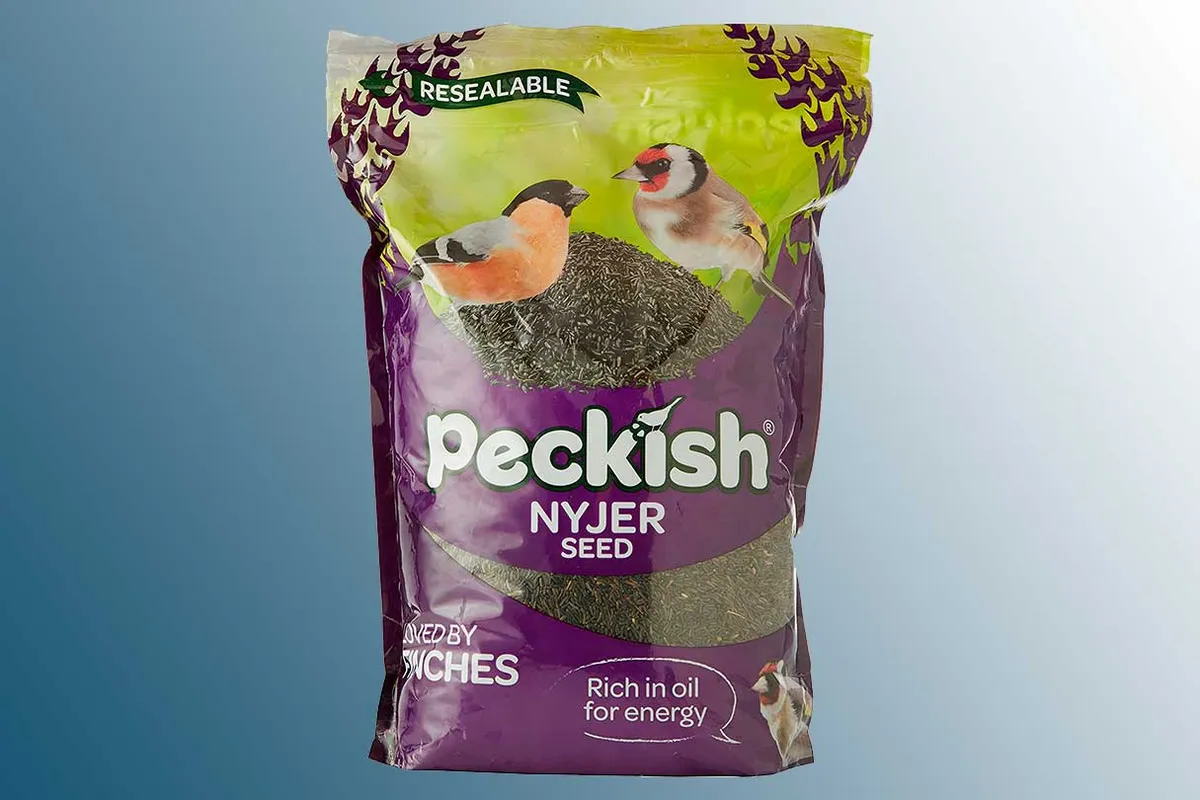
These are the seeds of a herb that originates in East Africa but are packed full of protein despite being smaller than a grain of rice.
The small size means that nyjer needs a special feeder with tiny slits rather than a mesh or a hopper that allows thin beaks in, but keeps the seeds from tumbling out. Birds attracted to nyjer have to work hard to get at the seeds meaning you get longer views as they feed.
This pack is a convenient choice, as it has a resealable tab to keep the seeds fresh.
Attracts: seed-eating birds with thin, tweezer-like bills such as goldfinches and siskins; bullfinches will also eat nyjer - their short stubby bills can just about negotiate the specialised feeder
Sunflower hearts
Buy now from Ocado (£12.00)
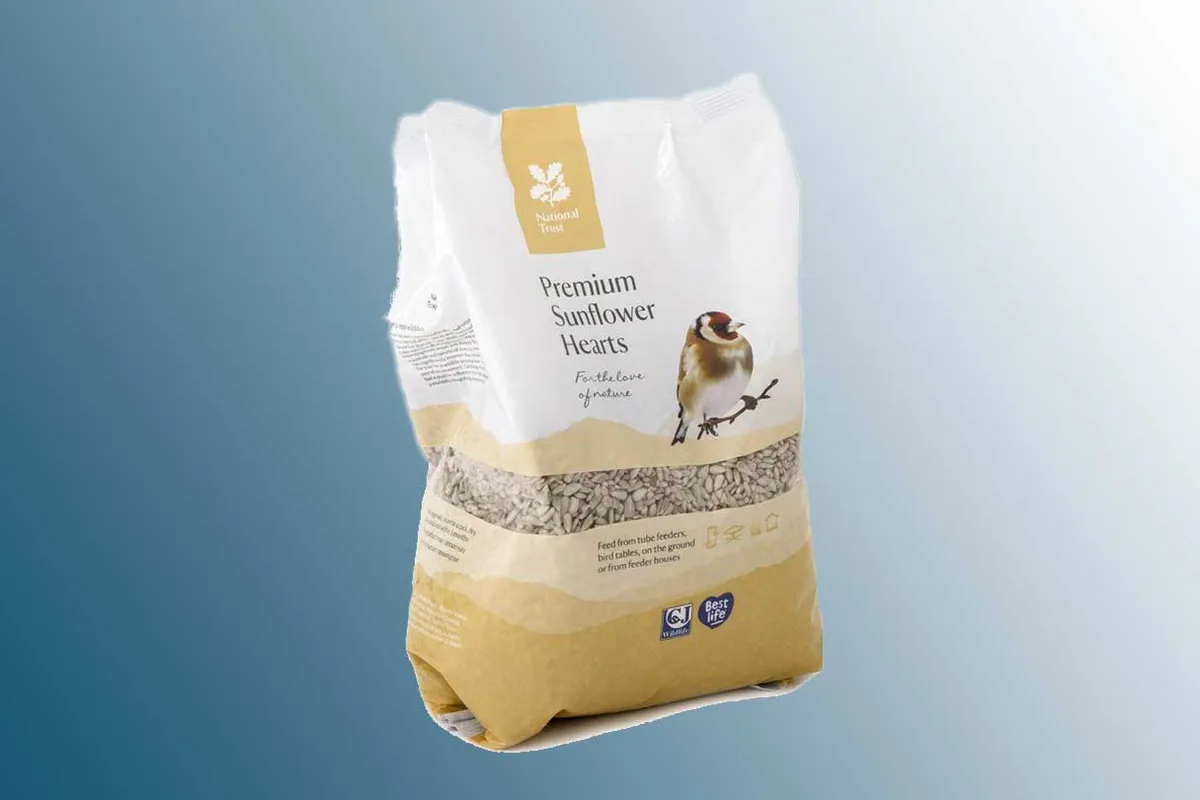
The small, pale elongated kernels of sunflowers. Full of energy-rich oils and protein. Again, these are best fed in a small mesh feeder so the birds have to work a little for their food. You can scatter a few on the ground or a bird table to see what other species might be attracted.
The National Trust has collaborated with CJ Wildlife to create this bag of sunflower hearts, which come from bakery and confectionery grade stock.
Attracts: everything but particularly attractive to goldfinches
Whole sunflower seeds
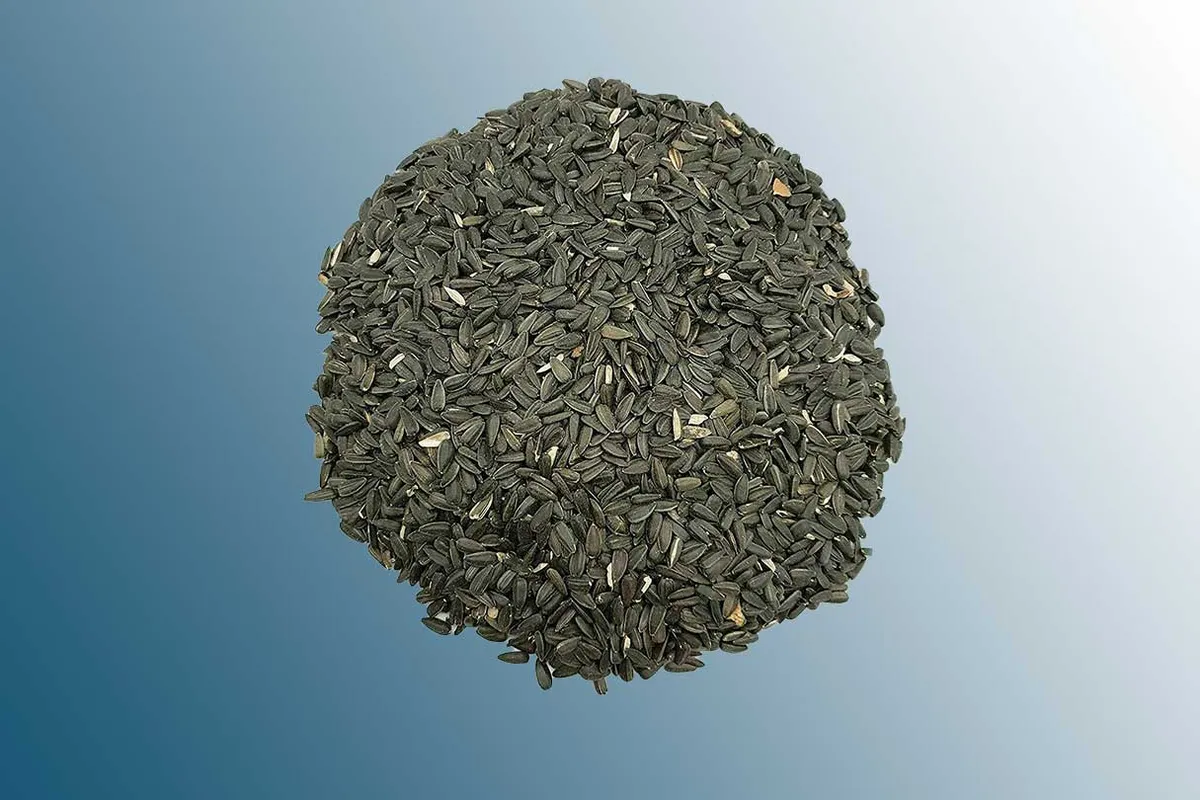
This is the whole black and while sunflower seed and is more of a challenge for birds to break open. Therefore, this appeals to birds with larger beaks. A typical mesh feeder is best for whole sunflower seeds.
Maltbys’ Stores has been around for over a century, so we trust its sunflower seeds, which you can buy on Amazon.
Attracts: chaffinches and especially greenfinches
Wild bird seed mixes

This can be a whole range of different seeds and grains, from millet to corn and including sunflowers. A hopper style feeder works best with small seeds.
This mix from Happy Beaks includes suet pellets, flaked naked oats and kibbled peanuts, corn maize and sunflower hearts. It’s also been heat treated to stop the seeds germinating underneath the feeder and discourage rodents.
Attracts: a broad range of species
Mealworms

Mealworms are the dried larval form of the yellow mealworm beetle, which is high in protein and energy. These are usually left on a bird table rather than fed from a feeder.
This big 3L tub from Supa is a practical choice as the lid keeps the worms fresh until you top up your bird table again. It’s also a convenient option if you want to avoid handling live mealworms, as these are all pre-dried - perfect for the more squeamish among us!
Attracts: insectivorous birds such as robins, wagtails, dunnocks and blackbirds
Fat balls
Buy now from Ocado (£2.00)
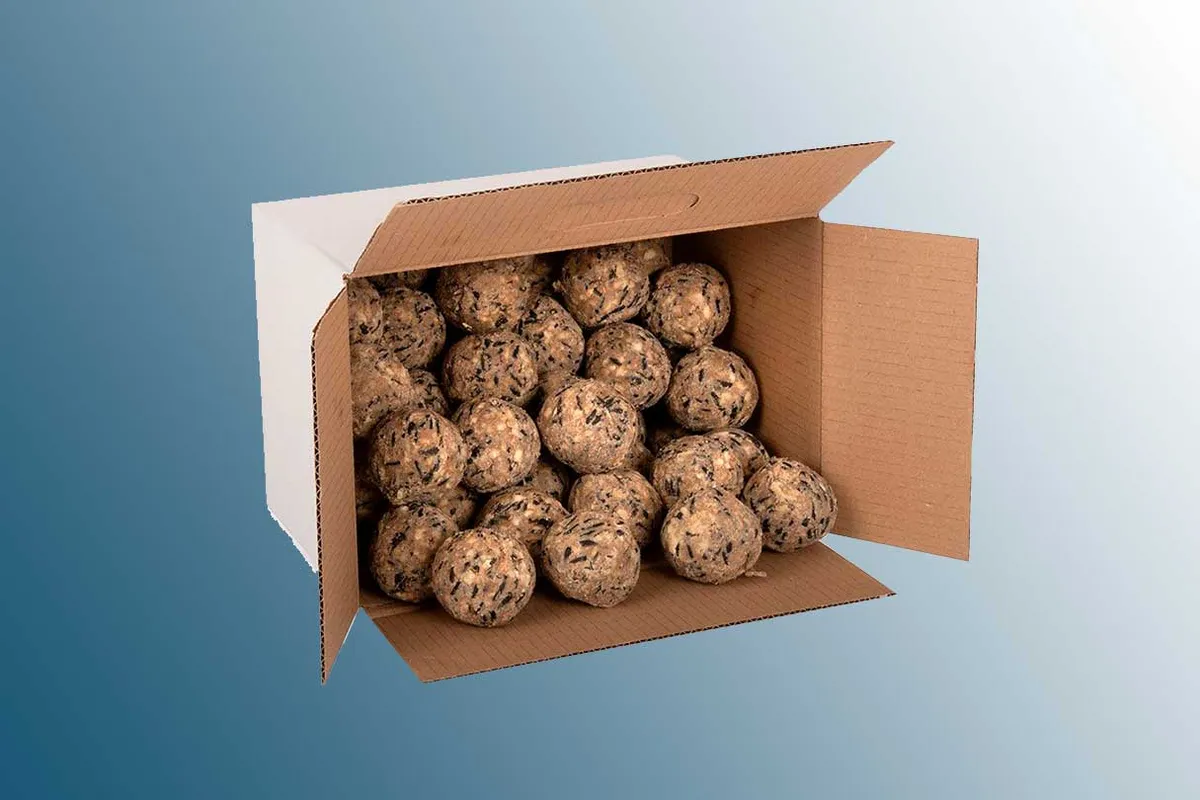
Fat balls often include suet and seeds – although it is not always easy to work out the ingredients or where they originated. Never use fat balls that come in small plastic mesh – this can trap birds’ feet and kill them. Use a mesh feeder or a specially designed feeder for fat balls.
We like these fat balls from CJ Wildlife. They include cereals, nuts and seeds. Plus, there is no netting.
Attracts: Robins, tits, sparrows, wrens, thrushes, blackbirds and woodpeckers
Seed mix
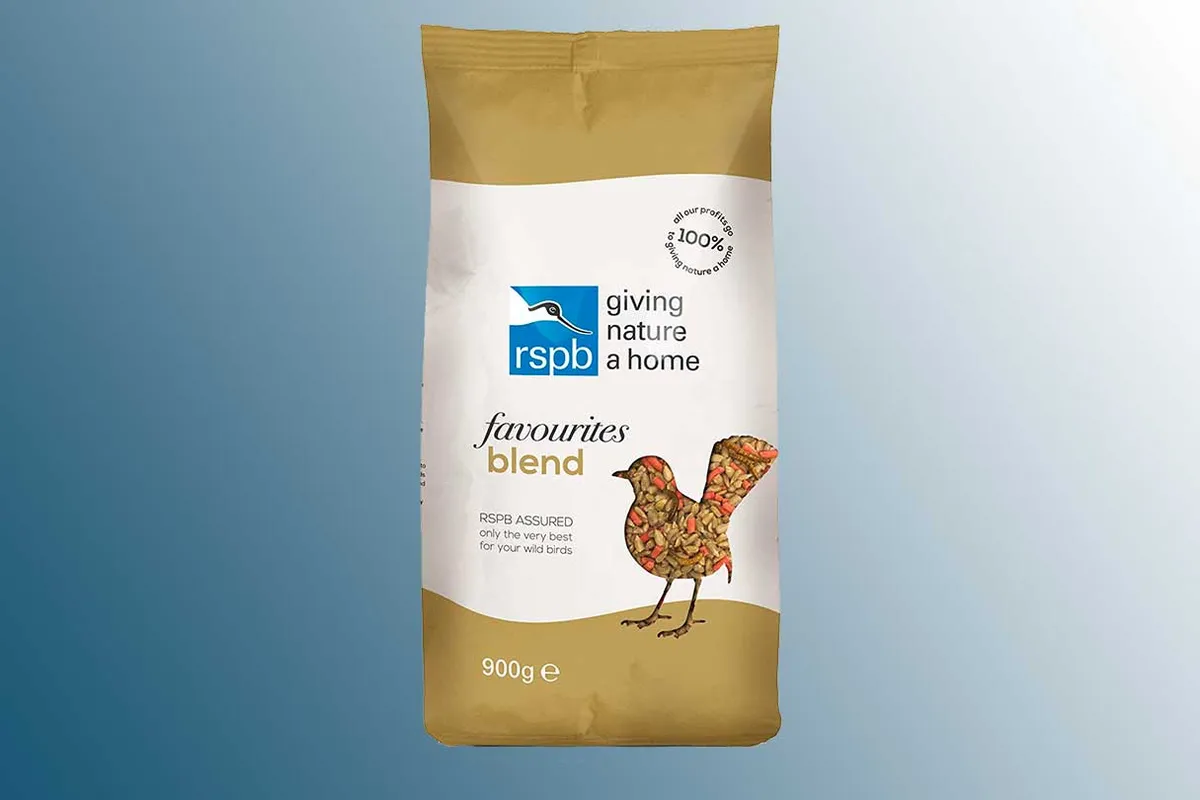
For a great all-round option, we recommend the RSPB’s Favourites Blend. You’ll get a mix of the charity’s three best-selling bird foods: sunflower hearts, high-energy sprinkles and dried mealworms.
You can use it all year long, in a bird feeder or sprinkled on a table or the ground.
Attracts: all birds, but especially robins, song thrushes, blue tits, long tailed tits and blackbirds
How to stop squirrels eating bird food
Once upon a time, most bird food was left on bird tables – but grey squirrels are wise to a free meal and so specialist bird feeders were created to hang from poles or trees.
Squirrels have long worked out how to break into most of these and eat all the food you’ve so lovingly left out for the birds. So your best bet is to invest in bird feeders that sit in little cages. These allow the small birds in but keep larger pigeons, crows and squirrels out.
You can also buy squirrel baffles – a dome or cone that is fixed below your feeding station to prevent squirrels scaling a pole to reach the feeders.
Why you need to keep your bird feeders clean
It’s very important to maintain high levels of hygiene when feeding birds. With so many avian visitors coming and going, diseases quickly spread unless the feeder is washed out every two weeks or so. Trichomoniasis is a particular problem and spreads between finches with greenfinches especially badly affected.
Washing up detergent and hot water will do the job. Make sure you rinse the bird feeders with clean water after washing and dry them thoroughly before refilling with food.
Don’t forget to leave out water
Birds need a dependable supply of clean water for drinking and bathing to keep their feathers clean and working efficiently. A bird bath is a great addition to your garden and an opportunity to watch different behaviours – a bathing blackbird is an extremely entertaining spectacle. Three rules of bird baths:
- Site it away from your bird feeders to avoid contamination with food
- Keep it topped up, especially in summer, as birds will come to depend on it
- Clean it regularly to remove algae and prevent diseases from spreading
